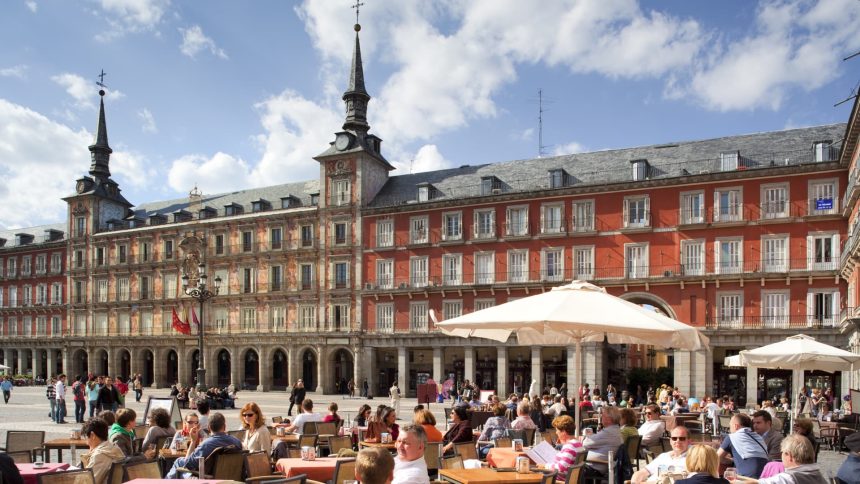April Jereza never intended to move abroad to Madrid, Spain, but now that she’s been there for seven years, she thinks she’ll stay for the long haul.
Jereza, 30, moved to Spain’s capital in 2017 after quitting her finance job in Canada, taking a “huge” pay cut and joining a program where she taught English as a language assistant.
She was immediately taken by how welcoming and energizing Madrid is. “It’s just a lively city,” she tells CNBC Make It. “There’s life on the streets. People are always out drinking a beer after work on the terraces or on a rooftop.”
Working professionals take their leisure time seriously, she adds: People typically work from 9 a.m. to 6 p.m. and take an hour for lunch, if not longer. After-work socializing at bars, museums and concerts is common before having dinner at 9 p.m. And, like much of Europe, Spaniards are guaranteed 25 days of paid vacation a year.
“People in Madrid, and Spain in general, really understand that you don’t live to work; you work to live,” Jereza says.
Other data touts the city’s big benefits for professionals: Madrid is the No. 1 best city for remote work, according to a new analysis from Remote.com, a global HR platform for distributed teams.
The platform ranked the top 100 cities for remote work based on factors including quality of life, safety, internet infrastructure and travel, as well as current economic factors, such as inflation and whether it offers a digital nomad visa, which is now available in more than 50 countries.
Here are the top 10 best cities in the world for remote work, according to Remote.com:
- Madrid, Spain
- Madeira, Portugal
- Toronto, Canada
- Auckland, New Zealand
- Tokyo, Japan
- Paris, France
- Portland, Maine, USA
- Taipei, Taiwan
- Stockholm, Sweden
- Reykjavik, Iceland
According to the report, Madrid has low taxes and expat visa options targeted toward freelancers and remote workers. Spain also has its own digital nomad visa for “international teleworkers,” and Jereza says its network of cafes and coworking spaces means you can work remotely but still feel connected with others. She now works as a product manager for a multinational social media agency from its Madrid office and works remotely part of the week.
April Jereza quit her finance job in Canada to move to Madrid in 2017.
Courtesy of April Jereza
Jereza says Madrid’s cost of living is a big factor that improves her quality of life. She earns a bit less today (25,000 euros, or just over $21,000) than she did in Canada but still lives well on a lower salary. For example, her studio apartment costs 600 euros, or roughly $638, a month, and the city’s public transit means she doesn’t need a car, so she’s able to save 900 euros ($958) a month — roughly half her paycheck.
One caveat, she says: “Working remotely in Spain with a U.S. or Canadian salary will get you very far, whereas working in Spain on a Spanish salary, you can feel the pains of inflation a bit more.”
Elsewhere around the world, Madeira, the second-best city for remote work, offers “competitive tax rates, generous residency options, coworking and living spaces built with digital nomads in mind, and a burgeoning startup community,” according to the report.
Portugal, generally, has become a popular destination for Americans, with the number of foreign residents living in the country having reached an all-time high in recent years.
Rounding out the top 3, Toronto often makes general lists of top cities for safety, quality of life, things to do and economic growth, the Remote analysis notes. The city attracts new residents from around the world: Roughly half of Toronto’s residents were born outside Canada.
Conversions from euros to USD were done using the OANDA conversion rate of 1 euro to 1.06 USD on April 15, 2024. All amounts are rounded to the nearest dollar.
Want to land your dream job in 2024? Take CNBC’s new online course How to Ace Your Job Interview to learn what hiring managers are really looking for, body language techniques, what to say and not to say, and the best way to talk about pay.
Plus, sign up for CNBC Make It’s newsletter to get tips and tricks for success at work, with money and in life.
Read the full article here




